The Financial Empowerment Center (FEC) at New York City’s Department of Consumer and Worker Protection (DCWP).
Design Lead
- Conducted research and user testings and facilitated design iterations
- Led design meetings and decision-making processes.
- Collaborated with 3 teammates to build prototypes and design solutions.
4 UX consultants / designers
12 weeks (2024)


"Looks amazing. Very thoughtful all the details you kept in mind. HUGE improvement from our current status."
- Vilda, DCWP Commissioner
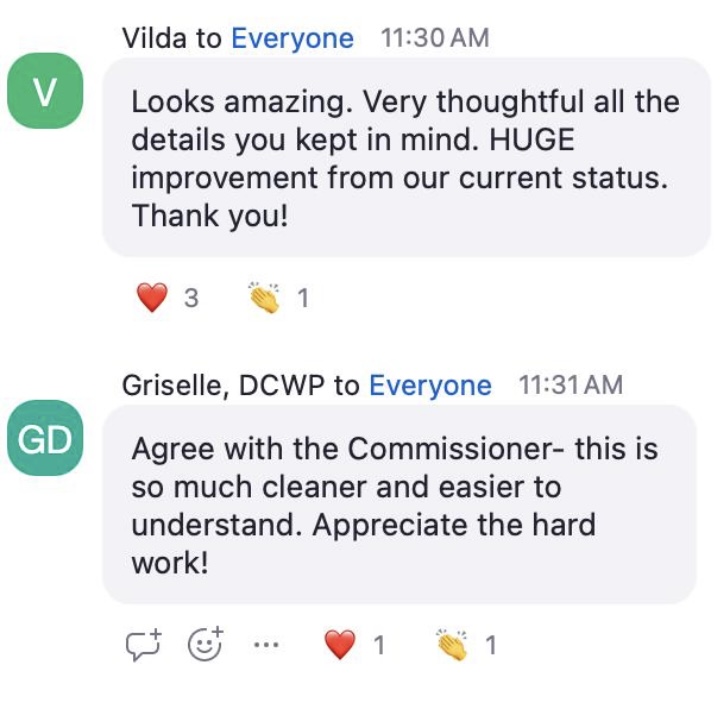
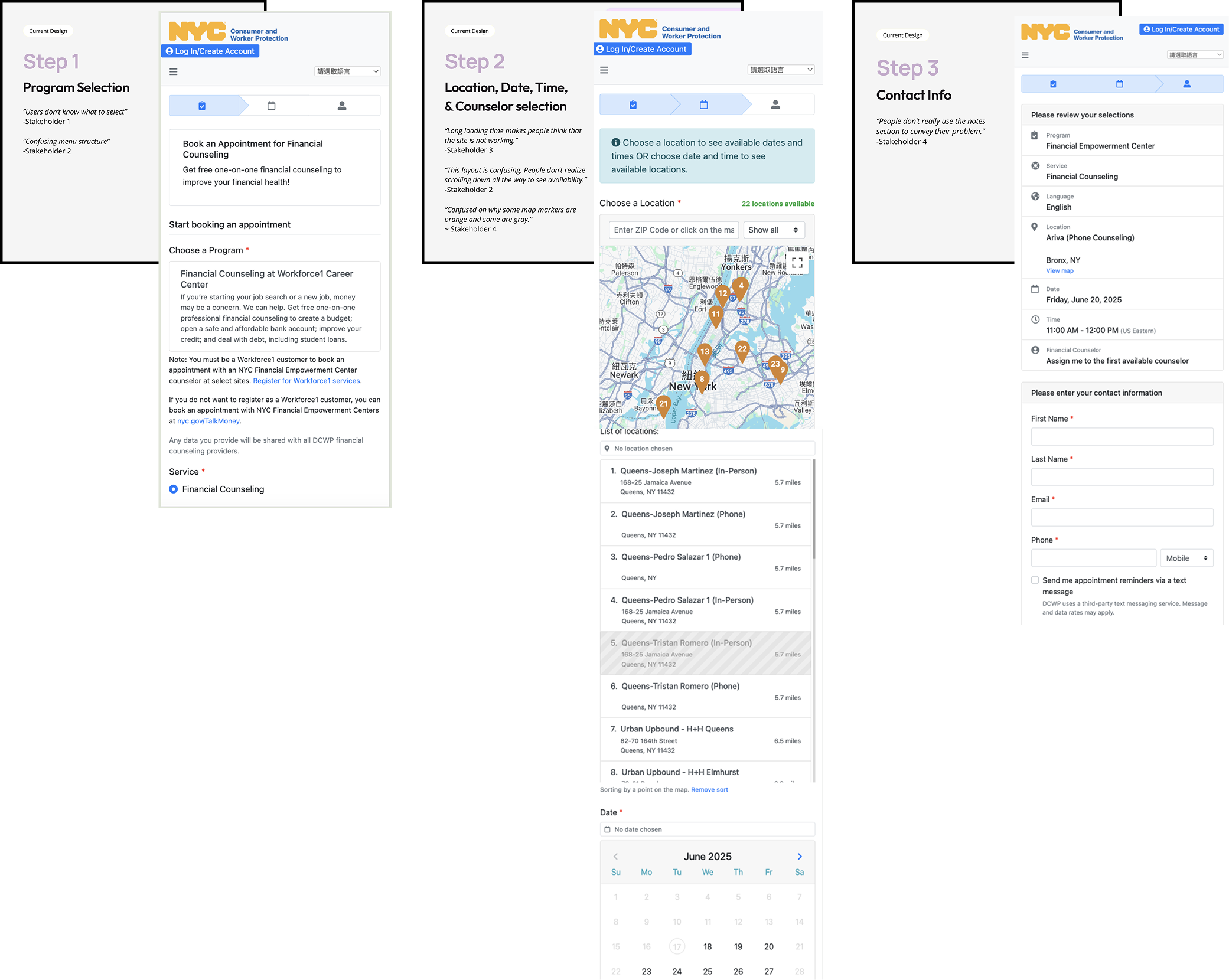
“We would like to lower the drops-offs during appointment-making process by improving the ease of use and eliminate any barriers.”
- Peggy, Director of digital communication marketing team

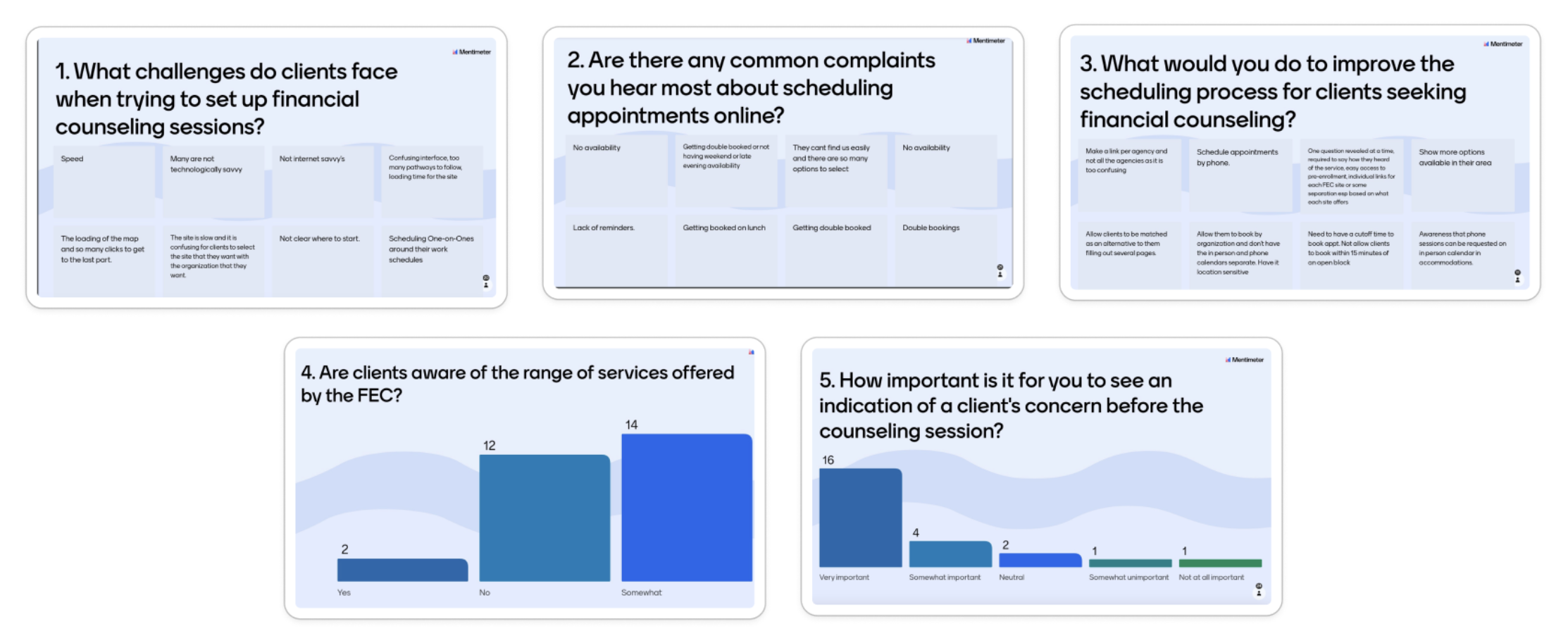
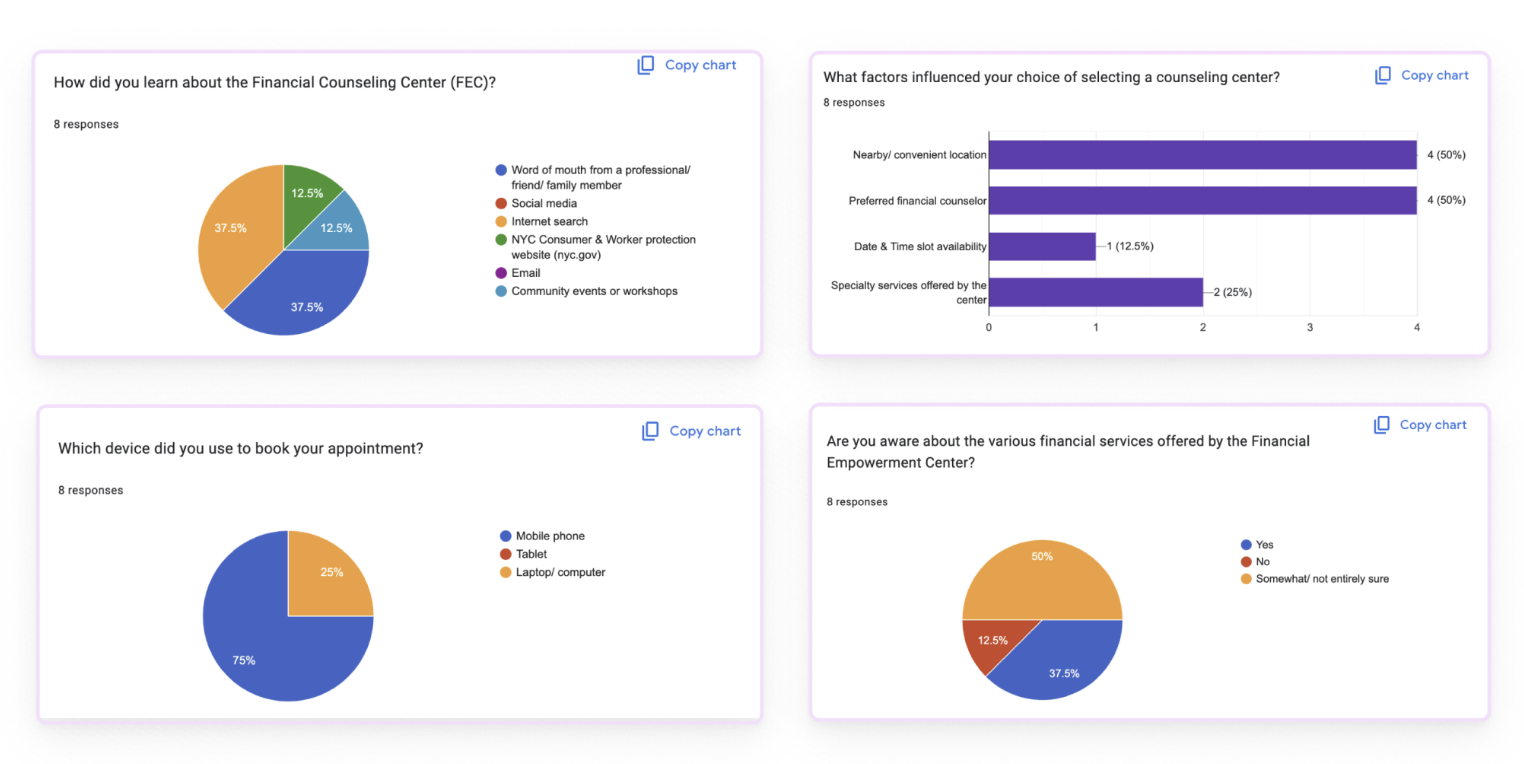
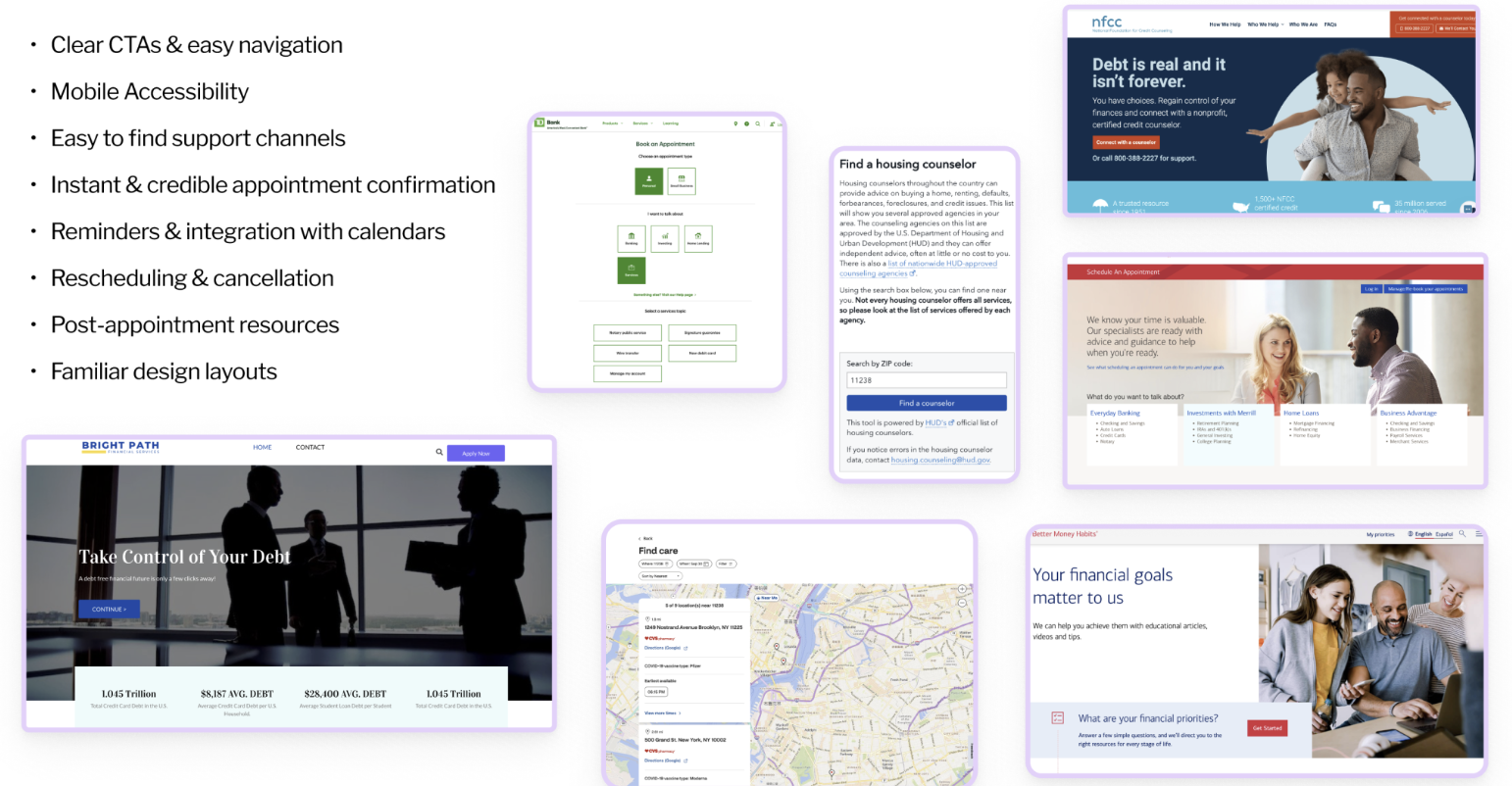
Each selection triggered long wait times throughout the portal. Many users assumed the system had crashed or that no appointments were available.

Among 3 steps, step 2 required users to select location, date, time, and counselor within a single screen.
Based on research, we learned users abandon the booking during step 2 the most due to the complex information and confusing interaction, which led to high drop-off rates.

Diverse user base, including older adults with limited digital literacy, struggled to complete the booking process independently.


To reduce loading times, we redesigned the booking process into smaller, sequential steps. By asking filtering questions upfront, we narrowed down data earlier.
Meanwhile, we worked closely with FEC’s IT team to ensure the feasibility.
.png)
.png)
To address content overload, we applied progressive disclosure and redesigned each step to focus on 1-2 tasks only. Clean visuals, clearer CTAs, and a visible progress bar gave users clarity and confidence throughout the journey.
.png)
To support older and low-tech users, We revamped the UI by referencing WCAG guidelines to improve digital accessibility and usability. For instance, we chose buttons featuring wider touch targets instead of checkbox selections.
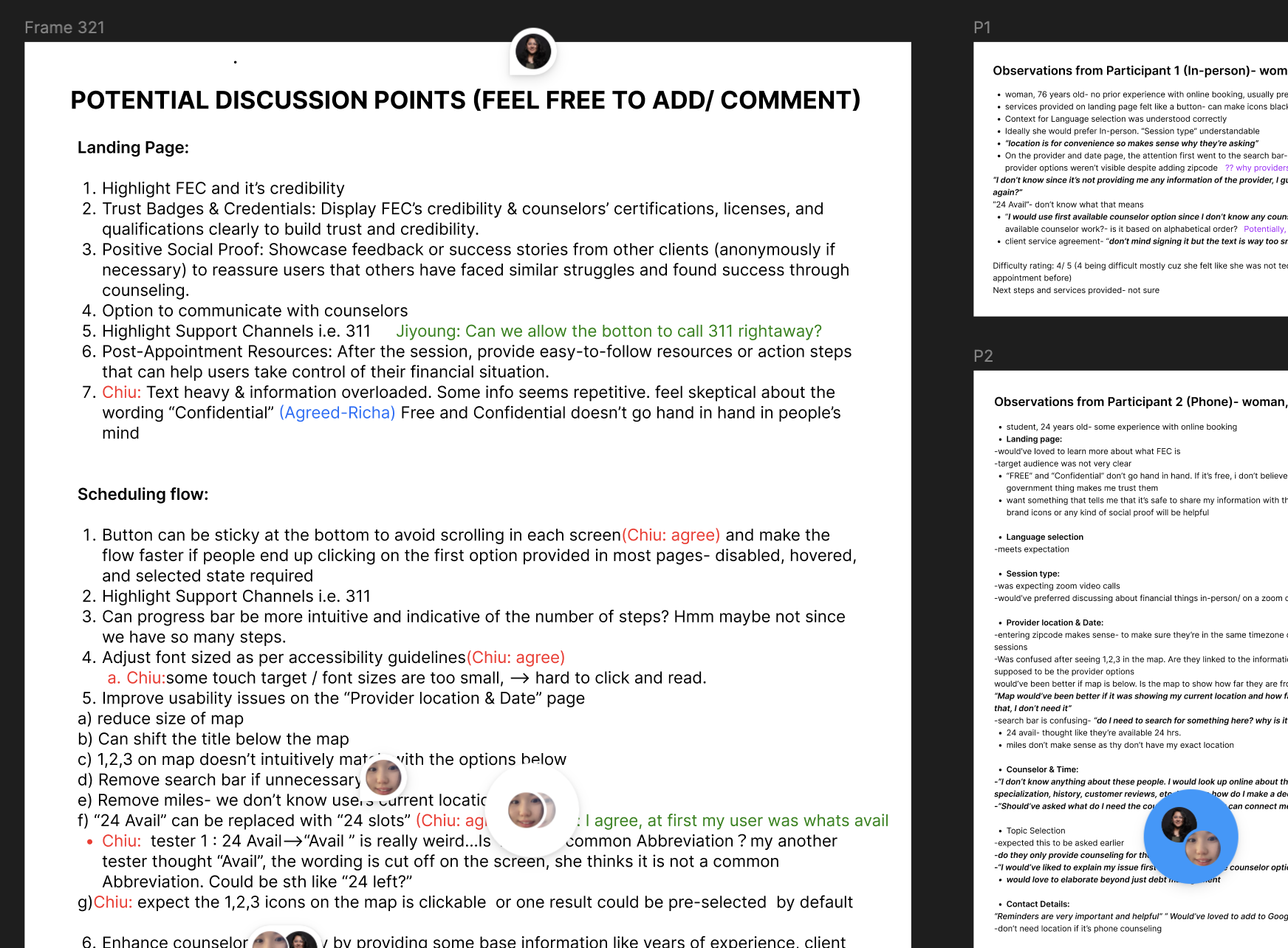
(1 being very difficult, 5 being very easy.)
“Overall this was easy to follow and the next steps were clear. “ - tester A
“It was pretty straightforward and the questions were very simple to understand.” - tester B
We received suggestions regarding text-heavy, wording choices and visuals.

.png)

.png)
